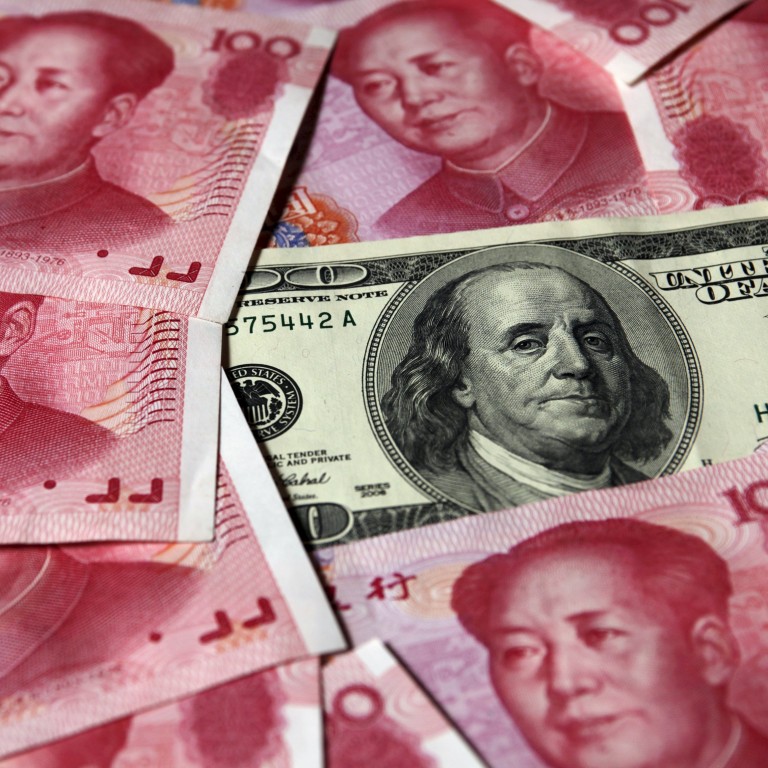
With the renminbi’s inclusion in IMF currency basket, the global financial system is set for a major shake-up
Peter Wong says the move is far more than symbolic; it is a major step in China’s quest for financial reform, and there’s more to come

On November 30, the International Monetary Fund announced that the renminbi would be included in its basket of so-called special drawing rights, thus putting the Chinese currency on a par with main reserve currencies such as the US dollar and the euro.
The move represents a major step along the renminbi’s path from a national currency to an international one. It also presages more of the financial and capital-account liberalisation that forms part of China’s overall economic reform efforts.
The renminbi’s SDR inclusion gives greater confidence to companies and institutions around the world to settle trade in renminbi and invest in renminbi-denominated assets
Just over a decade ago, renminbi usage was largely confined to mainland China. Today, more than a quarter of China’s trade is settled in renminbi. Various cross-border schemes allow foreign investors to buy stocks and bonds in mainland China. A large pool of offshore renminbi that is freely convertible for trade payment and investment also exists, Hong Kong being the largest offshore centre with some 1 trillion yuan (HK$1.21 trillion) in funding.
The SDR inclusion – long an aspiration for policymakers in Beijing – sends several important messages.
It underlines just how far the Chinese currency has come, and vindicates Beijing’s financial market reforms to date. The renminbi may not yet be freely convertible, but the developments so far reinforce the view that it is on track for full convertibility within the next few years.
At the same time, the SDR decision serves as a “sign” of long-term quality assurance: it underlines that the currency is liquid and stable as a store of value. Also, it will also give greater confidence to companies and institutions around the world to settle trade in renminbi and invest in renminbi-denominated assets.

Perhaps most importantly, the SDR inclusion presages still more financial and capital account liberalisation.
In the run-up to the IMF’s twice-a-decade review of the SDR basket composition, policymakers in Beijing stepped up financial reforms in a bid to attain inclusion.
In July, the People’s Bank of China made it easier for other central banks, sovereign wealth funds and international financial institutions such as the World Bank to invest in China’s inter-bank bond market, where the vast majority of China’s government and corporate bonds are traded.
In August, the authorities gave market forces a greater role in how the central parity rate of the renminbi against the US dollar’s daily trading band is determined.
And, last month, China increased the quotas that limit how much South Korean and Singaporean institutional investors can invest through the renminbi qualified foreign institutional investor scheme, one of the cross-border investment channels into mainland China’s capital markets. It also designated Malaysia as a new participant in the scheme.
READ MORE: IMF decision to include yuan in its basket of reserve currencies will help accelerate economic reforms in China
The SDR inclusion is not the end of this reform story. On the contrary, it is likely to prompt more moves by China to progressively open its doors to two-way capital flows.
A Shenzhen-Hong Kong equivalent of the Shanghai-Hong Kong Stock Connect is in the works. So is a scheme that will start allowing retail investors in mainland China to invest overseas.

As China seeks to rebalance its economy, it needs a more open capital account: liberalisation will help support economic growth, improve the allocation of capital, and help bring down borrowing costs.
The importance of the SDR inclusion is far more than just symbolic. The global financial system needs to get ready for a fundamental change – and for the imminent arrival of a new player in the form of a rapidly internationalising renminbi.
Peter Wong is deputy chairman and chief executive of the Hongkong and Shanghai Banking Corporation Limited

